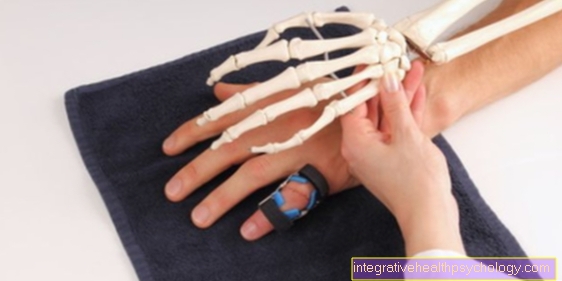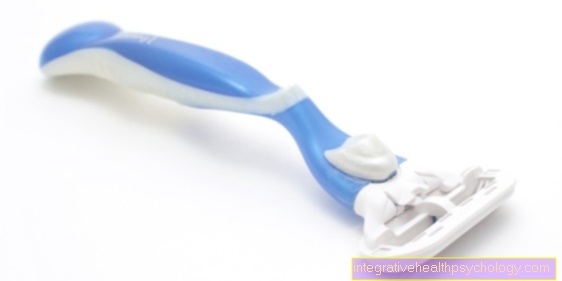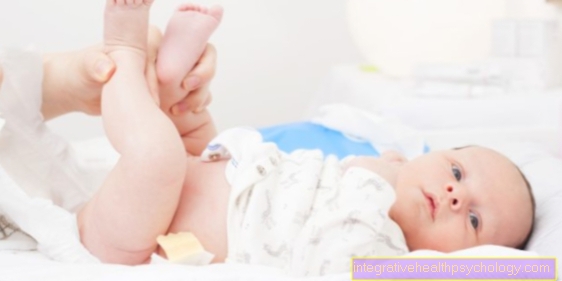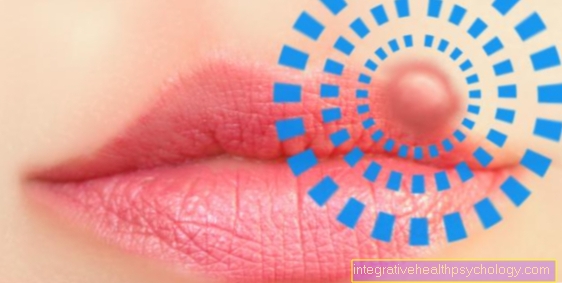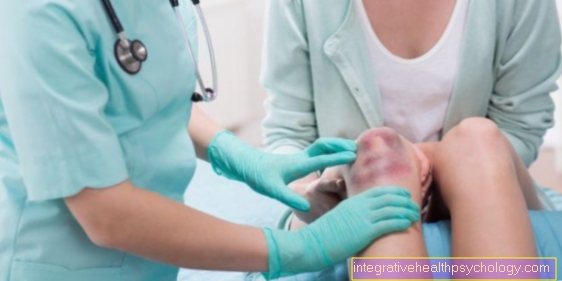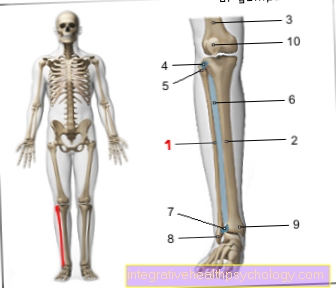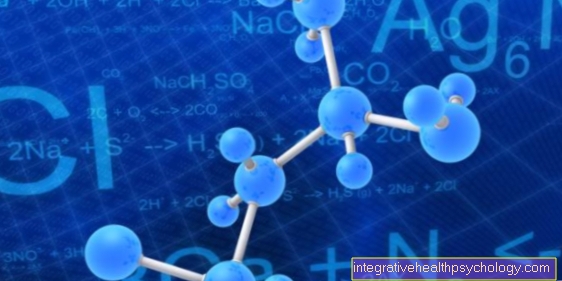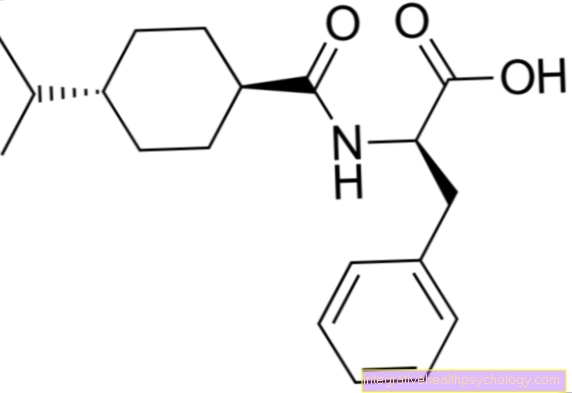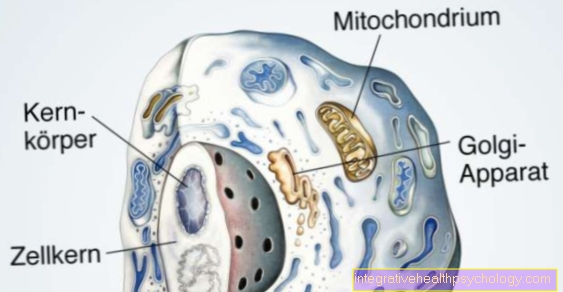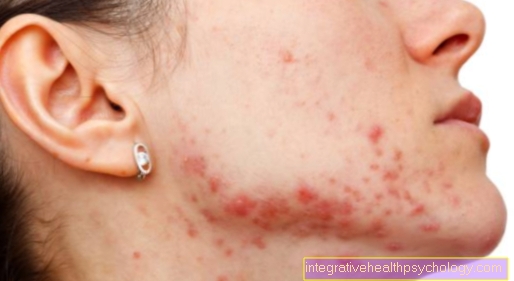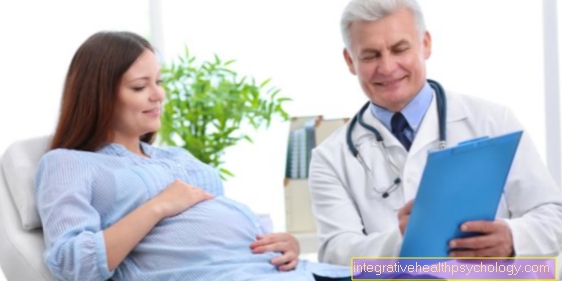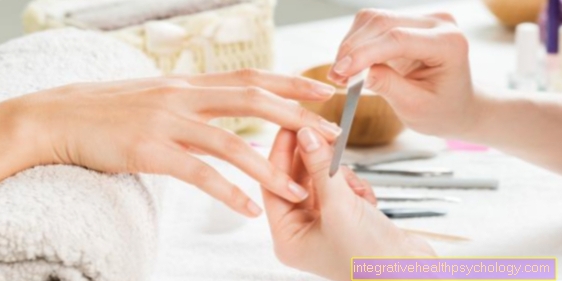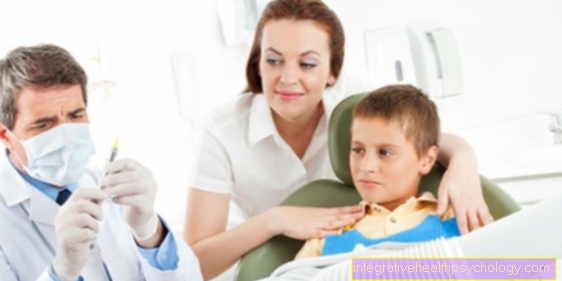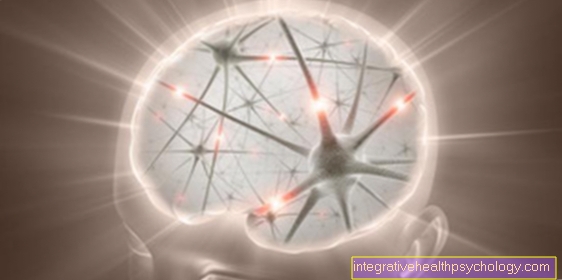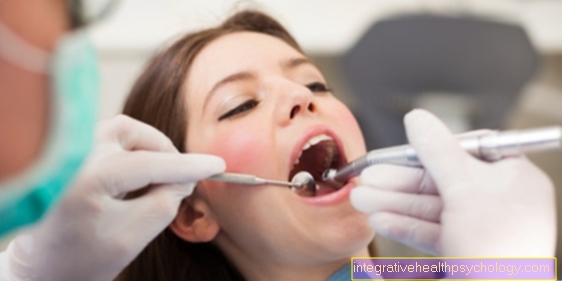Menstrual pain
Synonyms
- Dysmenorrhea
- painful menstrual period
- Period complaints
- Menstrual cramps
English: menstrual cramps
definition
Menstrual pain (medical: dysmenorrhea) is pain that occurs immediately before and during menstruation (menstrual bleeding).
A distinction is made between primary and secondary menstrual pain. Primary menstrual pain is caused by the menstrual period itself, secondary menstrual pain has other causes, e.g. B. Some diseases of the female genital organs are expressed by painful menstruation.
Occurrence / frequency
Menstrual pain belong to the most common gynecological (gynecological) complaints. More than two thirds of all women suffer from period pain at some point in their life, often from the first occurrence of their menstrual period.
Young girls and women in particular are affected, and menstrual pain often improves with increasing age or after the first pregnancy.
Period pain first occurs after the end of the period puberty on, other causes also come for that Pain in question. Common causes of such so-called secondary menstrual pain are infection and inflammation uterus (Uterus), Ovaries / fallopian tubes (Tubes) or benign Lumps the womb (uterus).
Symptoms
Common symptoms of menstrual cramps include cramp-like (colicky) pain in the abdomen, which can occur even before the start of your period.
In addition, many women suffer from:
- Nausea and vomiting
- Back pain
- a headache
- stomach pain
Diarrhea is also a possible symptom, as the contraction of the uterus to expel the mucous membrane also stimulates intestinal movement (peristalsis).
Also read our article: "Diarrhea During Your Period".
Some women also suffer from mood swings, a sad general mood or reduced exercise capacity. Increased water retention, especially in the legs and breasts, and the resulting tense, painful skin are also common.
Diagnosis of period pain

If menstrual pain has been on since the first period, it is usually primary menstrual pain (primary dysmenorrhea). Diagnosis is based on the previous history (anamnese) The patient is asked about the type and severity as well as the time when the menstrual pain occurred. In addition, a gynecological examination is carried out, during which the female sexual organs (uterus, vagina, ovaries and breasts) are palpated.
Read more on the topic: The first visit to the gynecologist
If the menstrual pain is not directly due to the menstrual period but has other causes (secondary menstrual pain) further diagnostics are necessary. Depending on the suspected diagnosis, this can include blood sampling, abdominal (through the abdomen) or vaginal (through the vagina) ultrasound examinations, radiological imaging in the form of computed tomography (CT) or magnetic resonance imaging (MRI or magnetic resonance imaging), hysteroscopies (examination of the uterus with a camera) or even include diagnostic laparoscopies (examining the lower abdomen with an endoscopic camera).
These examinations can rule out fibroids of the uterus or endometriosis (the womb lining spreading to other parts of the body). Endometriosis in particular is present with a frequency of up to 10 percent in the female population and is therefore a frequent cause of menstrual pain.
Read more about this topic under Gynecological examination
prophylaxis
A healthy eating Having lots of vegetables, fruits, whole grains, and unsaturated fatty acids (such as gamma-linolenic acid in safflower oil) can cause symptoms like this Water retention, cramps and nausea and Mood swings prevent.
A restful sleep and lots of exercise in the fresh air ensure Relaxation and have a mood-enhancing effect. Both have a positive effect on the feeling of pain and discomfort, and sunlight has a very positive effect on the general mood, especially in winter.
Smoke and alcohol can worsen the symptoms and should especially before and during Menstruation Be avoided.
Preventive can also be a birth control pills then smoking should be avoided completely as it is too Thrombosis or Pulmonary embolism when taking the birth control pills can come.
forecast
Most women have primary menstrual pain relief after puberty, with many they disappear completely. Even after one pregnancy Many women notice an improvement in menstrual pain that was previously felt to be stronger.
Do the menstrual pain have other causes such as Legs Endometriosis or Fibroids of the uterus, the prognosis depends on the treatment of the underlying disease.
Summary
Period pain is pain that occurs before and during. A distinction is made between primary menstrual pain that is directly caused by the Menstrual period and secondary menstrual pain that have another cause, e.g. B. a disease of female genital organs.
Almost all women suffer from menstrual pain at some point in their lives; these are usually expressed in young women and decrease or disappear with age. If menstrual pain occurs for the first time with older age or after menopause (Menopause) so should the patient be examined by a gynecologist, as it can be a possibly serious illness causing the symptoms.
Period pains can be medicinal, herbal and general measures treat and greatly reduce.



